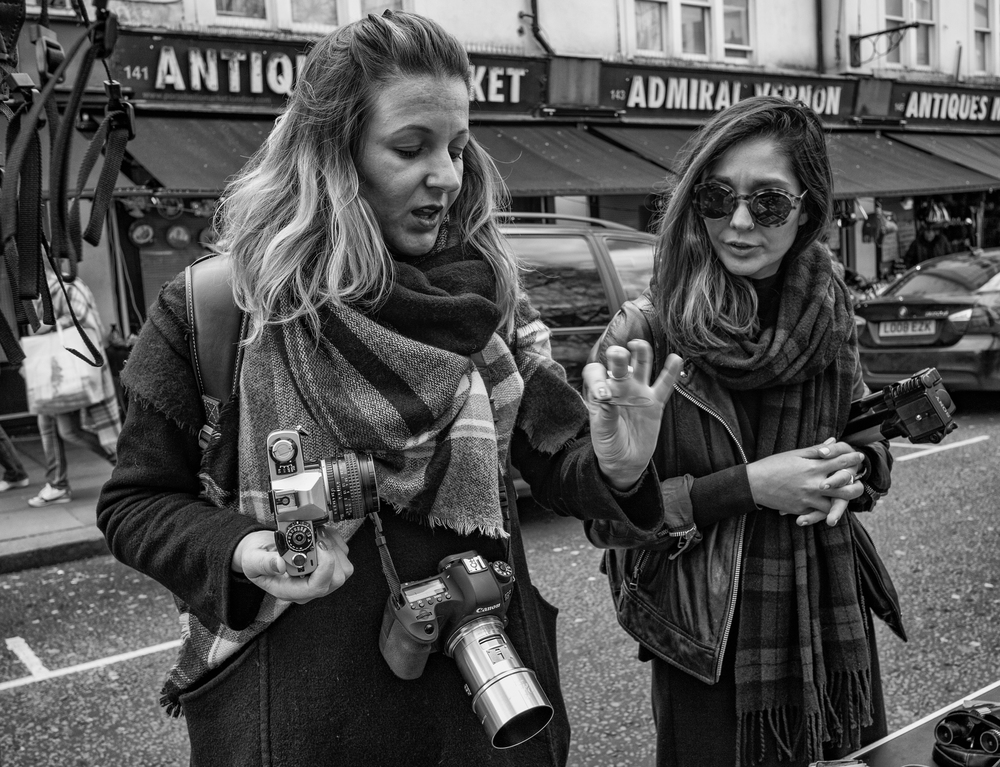
Sometimes the best-planned outings disappoint, perhaps because of all the anticipation and the dangers of anticlimax. On other occasions, completely unplanned days turn out to be the best. So it was last Friday morning as I sat twiddling my thumbs in front of the computer. Adam Lee called and announced he was heading to Portobello Road and would I like to join him. I’ve written about Adam before—biologist, talented guitarist and photography nut. We share a lot of common interests, including fountain pens, manual typewriters and, of course, old cameras.
I dusted off the Leica M-P and stuck on the minute 28mm Elmarit before jumping on the No.27 to Notting Hill Gate. I’ve been meaning to give this useful little lens an outing ever since the Leica Q persuaded me that a wide 28 can be fun for street work. Any disadvantages of the wider angle of view (and the need to be closer to the subject) are offset by the incredible depth of field even at medium apertures. This is graphically demonstrated in the final photograph in this article.
Double Stroke and Dual Range
Adam turned up with his 1957 double-stroke M3 and a 1958 dual-range 50mm Summicron, one of the best and most popular vintage lenses. We started chatting over coffee at Caffe Nero, first about the M3 and the early Sekonic shoe-mounted light meter that had arrived in the mail that morning. But we soon got on to MPs, M2s, M4s and everything in the Leica back catalogue. I convinced Adam his next stop should be a screw-mount Leica II or III. He’d love them, I know.
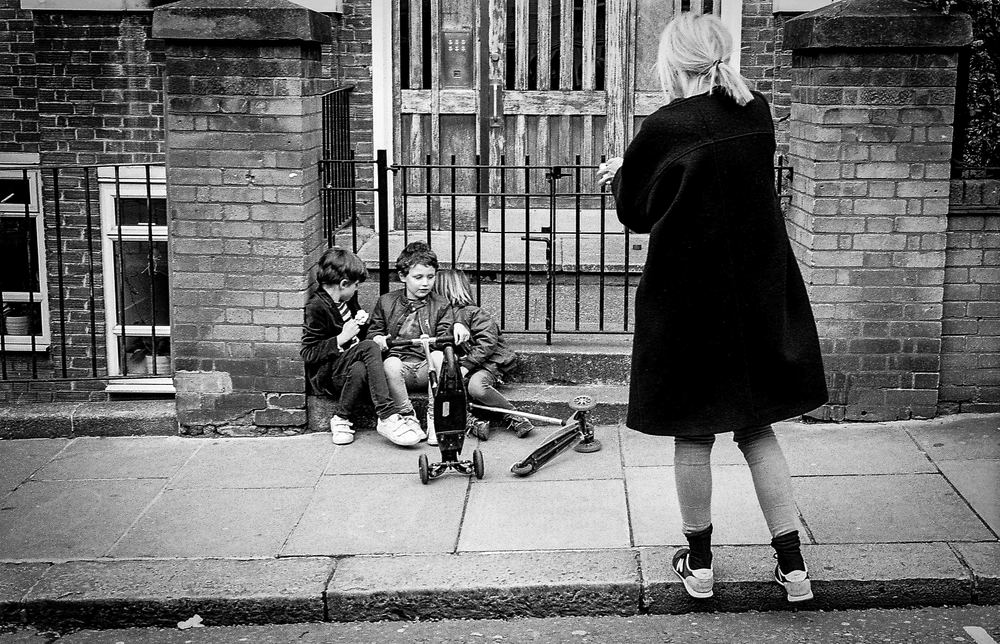
This was Adam’s first visit to Portbello, despite living not far away, but it is an old stomping ground of mine. Thing is, though, I had never been there on a Friday as far as I can recall. Portobello is a Saturday haunt, just as Brick Lane is at its best on Sundays.
I was surprised on two counts. First there were many more interesting people wandering around than I had expected, including a large complement of obviously keen photographers. Second, the crowds overall were thin and this was a good thing. The wheat is definitely sorted from the chaff on Fridays and the majority of visitors were interesting and more approachable than when in the usual crowds. It turned out to be much more suitable for street photography than a typical Saturday simply because of the quieter streets.
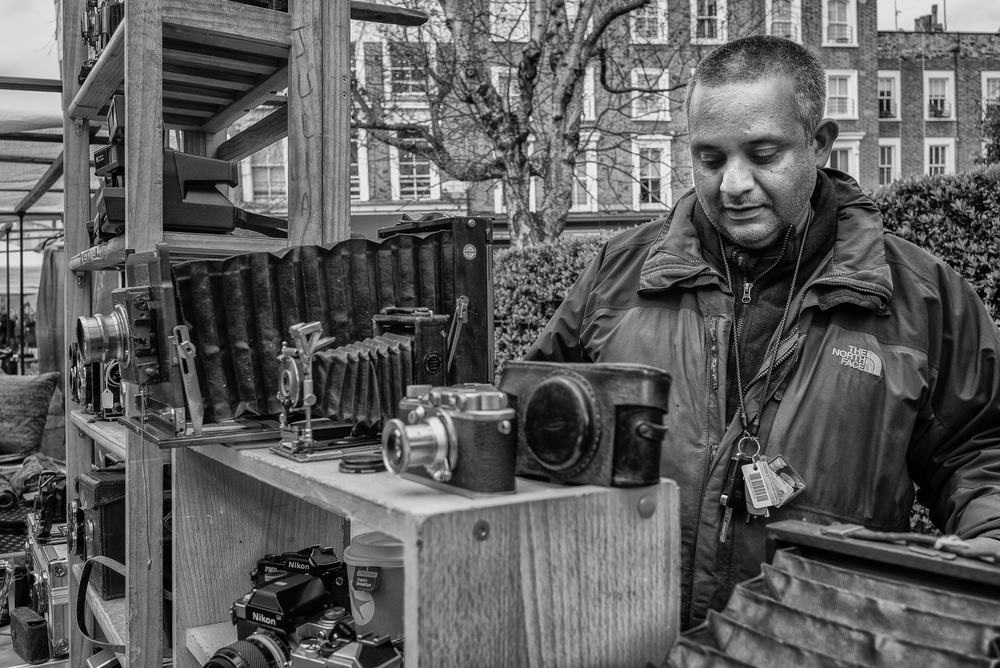
Juliano Ribeiro
The downside is that several of my usual haunts were closed, including Henry the Penman and Joseph the Cameraman. All was not lost, though, because Adam found Juliano Ribeiro, Cameras London, and his well stocked little stall, replete with many Olympus OMs, a clutch of Polaroids and an alluring shelf of Rolleis. Juliano seems like a good guy and is even planning to visit the Bièvres camera fair in June. So I can tell he’s an enthusiast and not just an opportunist. Another addition to my list of people to visit in Portobello.
Juliano had some nice stuff, including a solitary Leica II with f/3.5 Elmar which was in excellent cosmetic condition, although I didn’t check out the operation of the camera, nor the condition of the lens. Surprisingly, as we were eyeing the Leica, Clement Lauchard, whose day job is at Leica Mayfair, wandered in from stage left and gave it the professional once over but didn’t buy. I was tempted, of course, but I fortunately experienced one of those rare get-thee-behind-me-Satan moment of lucidity. I moved on before the temptation was too great, reminding myself I already have a clutch of LTM Leicas and a bagful of inexpensive screw lenses.

Petzval
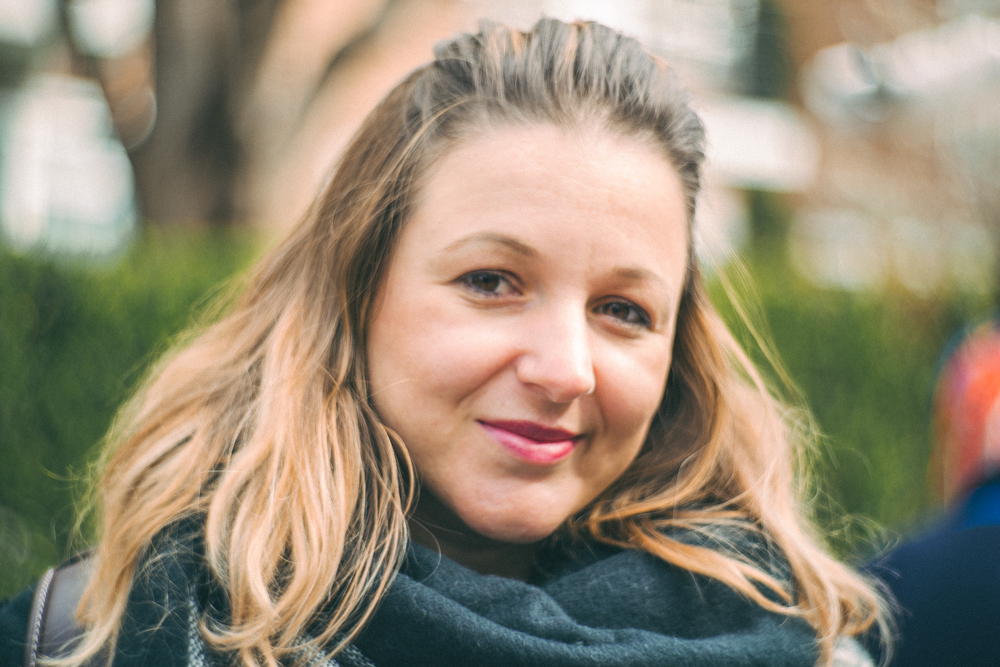
Attention was soon diverted from the old Leica when Adam and I got talking to Dani Garbiatti, visiting from Brazil, accompanied by her London-based sister Rafaela. It was the 85mm Petzvel brass lens on the Canon 6D that caught my eye. I’ve seen and read a lot about them but haven’t really taken an interest up to now.
The aperture system on the Petzval was most impressive: A bagful of metal slides with holes of different sizes, one at a time to be slipped into a slot in the lens barrel to create the desired aperture (see the header photograph to this article). This is manual writ large. And the focus ring is a knurled knob sticking out of the barrel. I had a go and can report that focus is really quite easy. Petzval lenses are made in Russia at the old Zenit factory. They are by no means intended to compete with modern glass but reputedly they have an impressively narrow depth of field, when shot wide open, and a unique swirling bokeh. They look fantastic and they are definitely fun. Dani has sent the above colour shot of her, taken through the Petzval by either Adam or me, we can’t remember which of us.
Lily the Leica
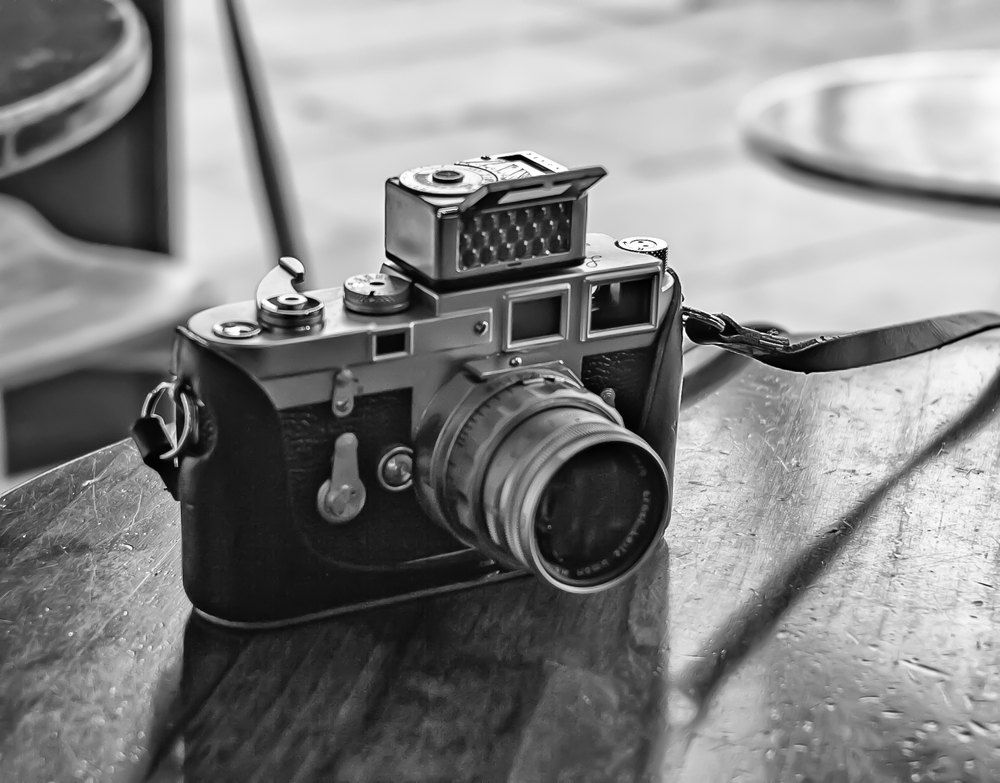
At the coffee break I took a closer look at Adam’s M3 and that gorgeous lens, this time with the specs attached. This is a great lens and very much in demand, although it is limited by not being compatible with some later Ms.
Mounted on top of the M3 was the little Sekonic meter that Adam had just bought. I couldn’t help thinking that with its diffuser raised it gave the camera a cheeky humanoid visage. In fact, if they ever wanted to make a camera version of Thomas the Tank Engine, this camera and meter would certainly double as Lily the Leica. The specs would help, too. The little Sekonic has its drawbacks though, as Adam explains:
I got it because I noticed the shoe was mounted to the far right of the meter. This would be useful for a Leica, as it wouldn’t obscure the shutter speed dial. That said, it was sort of large and clunky on top of the camera, so I’m not sure I’ll use it. I got it because I hadn’t taken photos in a while, and needed to retrain my eye a bit. Fortunately I also have a handheld Zeiss Ikophot selenium meter (also from 1957 I think), and I’ve been using this to take a reference reading each day, and then adjusting the settings by eye, as I go.
The last two rolls were exposed just the way I strove for, so I’m going to roll with this method from now. The Ikophot is so light and quick, and fits in my coat pocket; it also doesn’t add unnecessary weight to the camera, so I’m sticking with that for now. It’s never failed me since I got it, and you can quickly get a feel for compensating for changing light by eye anyway. That’s one less thing to check and do while you’re out and about, I suppose.
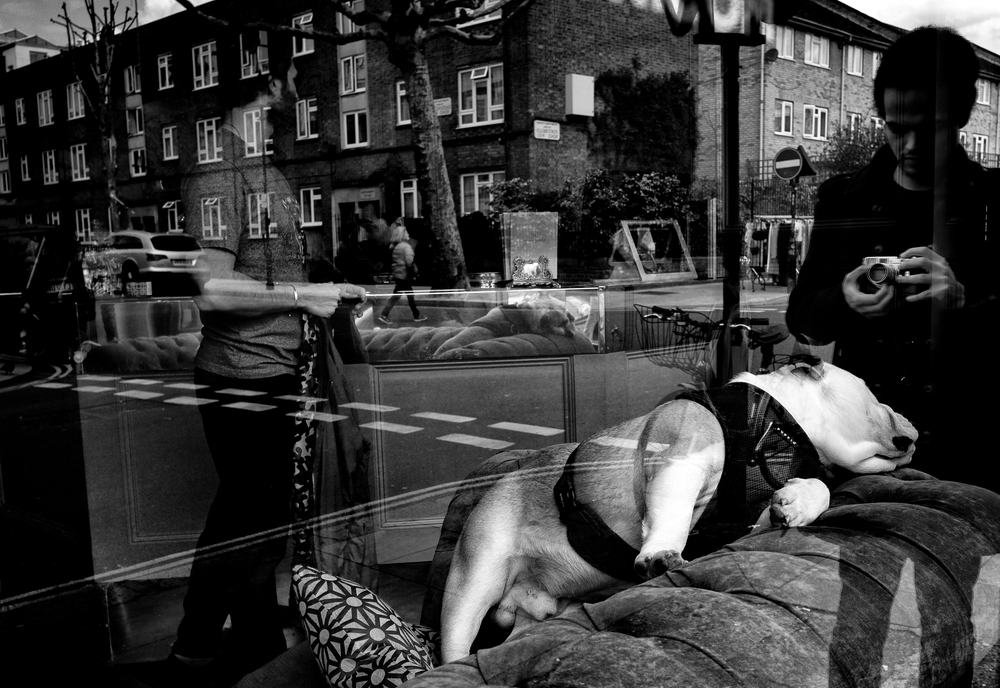
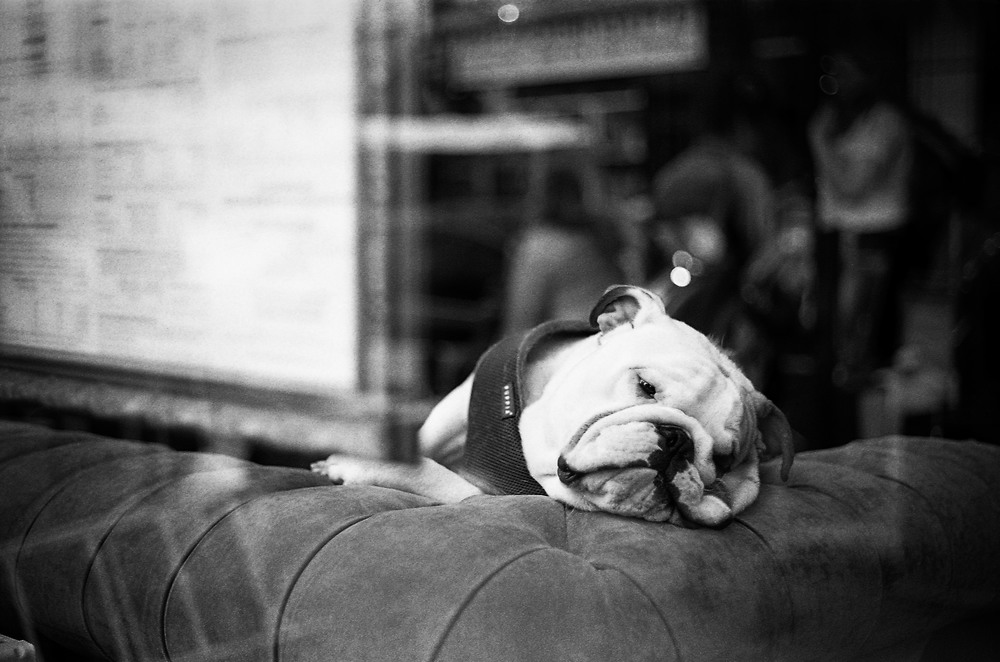
Temptation resisted
Did I buy anything? Well, I was tempted to a really nice Olympus OM 2 in Juliano’s little photographic empire, not to mention the old Leica and Elmar, but I had to rush off mid afternoon for another appointment. Adam, who stayed behind to get some more pictures, caved in and snapped up a Polaroid 250 which has been in his sights for a long time. It was the Land Camera flagship in its day and takes a huge film size. But, with excellent optics, it can be pricey. Adam got it for £45 and plans to do his own CLA. Later, I got a report:
Regarding the Polaroid—it takes some obsolete, giant 4.5v battery. However, 3 AAAs add up to the same power, so I’m hoping to modify the camera with a 4-capacity AAA carrier I got from Maplin. It’s been done online, so a little soldering should get a more readily available trio of batteries powering the camera instead of the original rig. As for the film, it costs a fortune, some £50 for two packs, and that’s just 16 shots! Not sure if I’ll try that just yet, but lets see how the battery mod gets on.
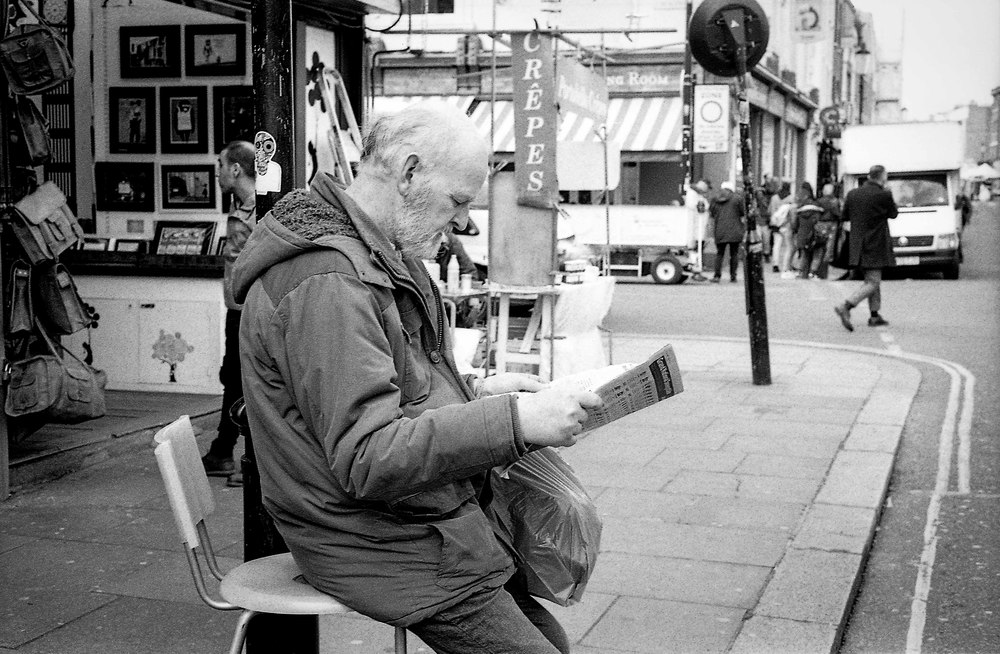
Not to be outdone, Adam was back in Portobello Road the following day, a much busier and fully-open Saturday:
I went to the Leica stall you recommended, and saw Juliano again. He was lovely. At the Leica stall that we visited (that was shut on Friday), the guy looked at me, saw the camera on my shoulder and said: ‘No business for you. You already have a Leica M3 with the best Summicron. There is nothing more I can do for you’. That said, I still asked if I could play with a few screw-mount cameras following your recommendation. Beautiful.
They really have something special, and the finder optics astonished me. I didn’t expect such a wonderfully clear, crisp view. How people moan about them having unusable finders is beyond me. They’re wonderful little cameras. Maybe some day in the future I’ll be able to acquire one. But, for now, I’m quite happy with my M3. Since it was serviced, the shutter is such a satisfyingly quiet click, and the rangefinder is a joy to use.
All in all, then, a satisfying day in an interesting location with two great cameras. It is interesting to see the comparisons between the rather clinical street shots from my M-P and 28mm Elmarit with the film images from Adam’s M3 and DR Summicron. I’m looking forward to doing some more similar comparisons in the future.
- Subscribe to Macfilos for free updates on articles as they are published. Read more here
- Want to make a comment on this article but having problems? Please read this
Withering Depths
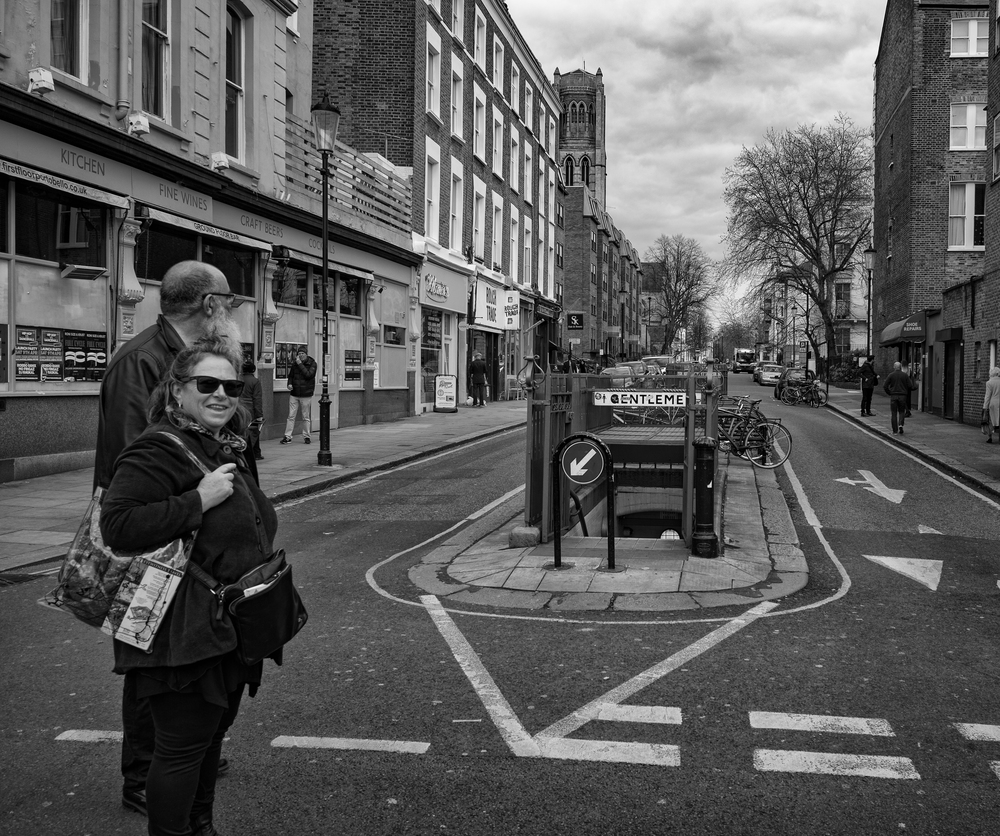

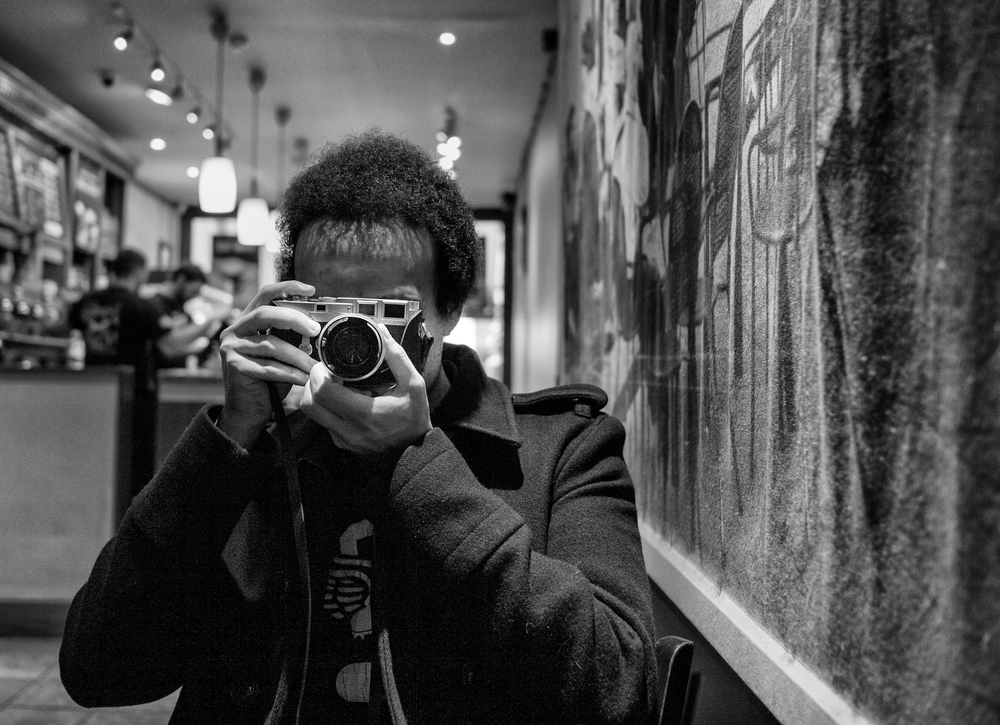
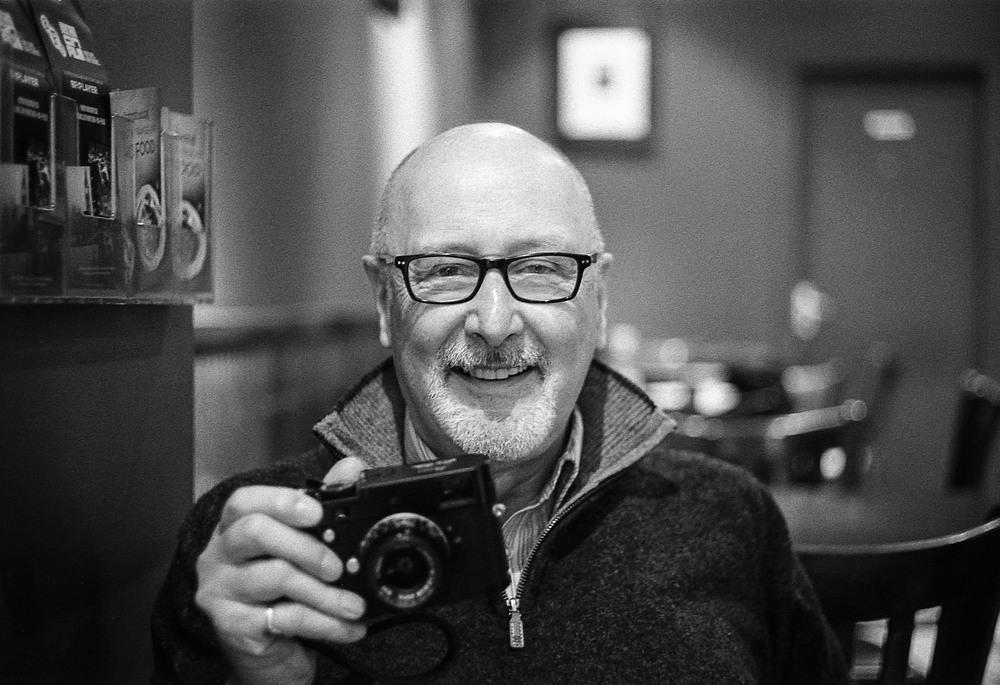
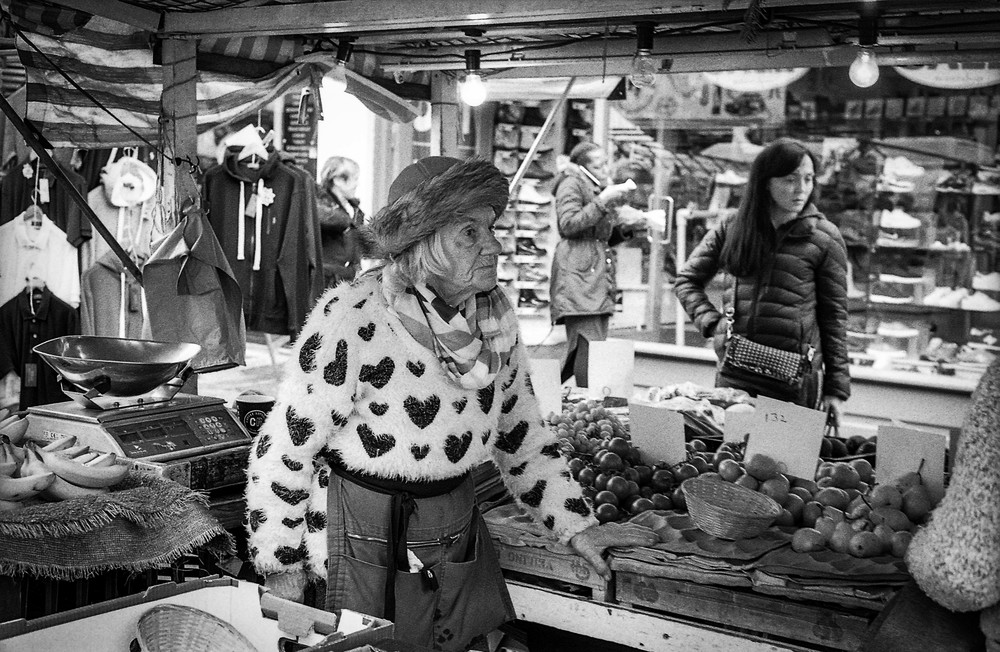
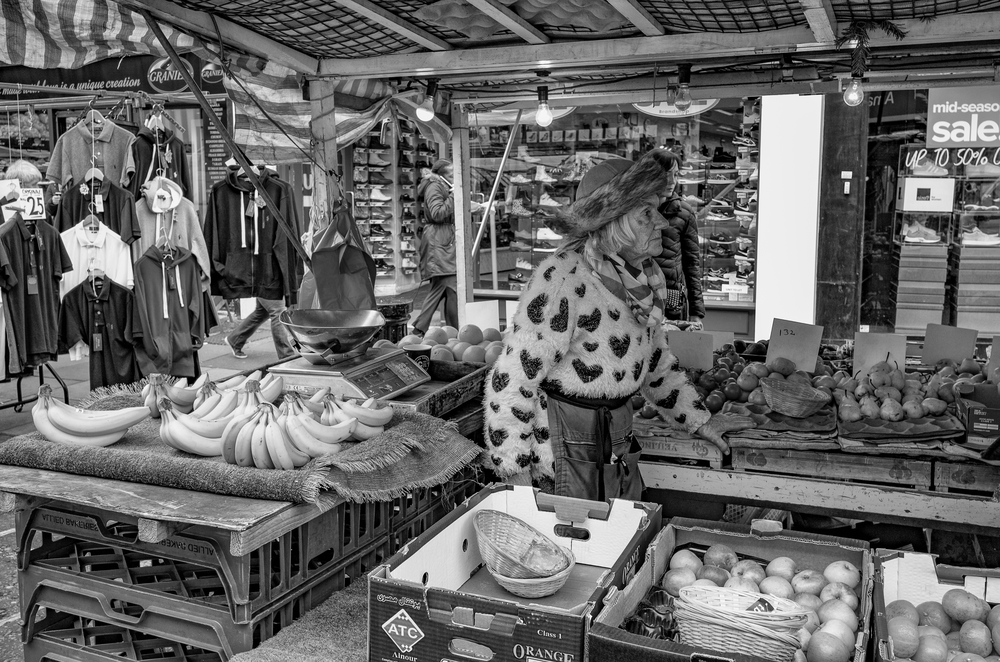

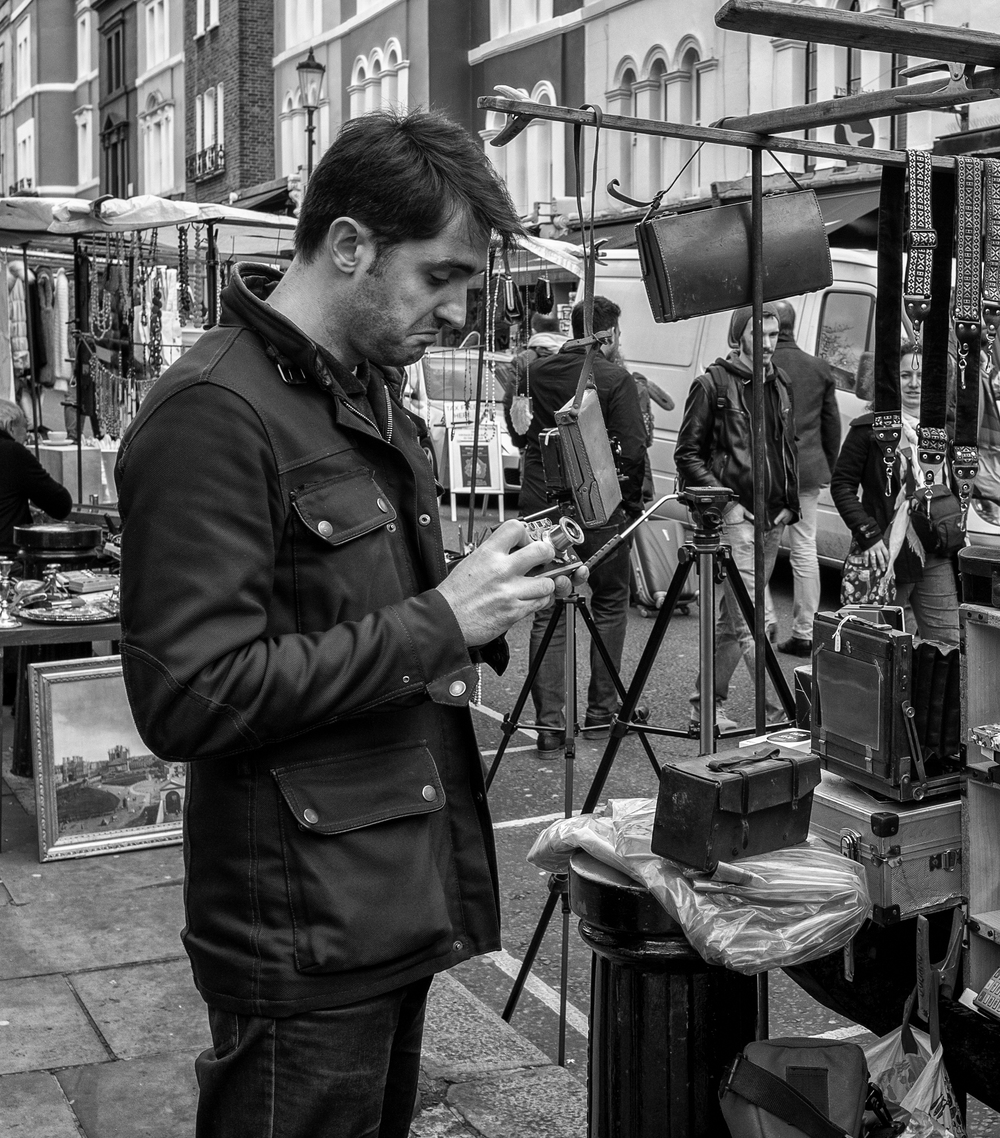
The scanning is important, but I do not seek the equivalent of today’s digital cameras when shooting film. If you try to go too far in that direction you will lose a lot of the character which comes from using film with a classic camera/lens combination. I know that Mike will not mind it when I say that the shots taken by the M3/50DR combination have more intrinsic optical character than those taken by the M-P/28 Elmarit combo. I see that he uses the word ‘clinical’ above to describe the digital photos. The photographs themselves are, of course, all equally good from a compositional and aesthetic standpoint and in all other respects.
The dealer mentioned above, is, of course, right. The M3/50 DR camera/lens combination stand at the top of ‘Mount Olympus’ as against all other combinations produced by Leica in the last 60 years. You really cannot get anything better. The only modern lens that compares with the 50 DR in terms of build and optical character is the chrome version of the current Summilux, which weighs more than the black version; more brass used? I always find that photos taken by me on an M3 are more likely to be correctly focused than any taken on other Leica cameras, largely thanks to the 0.91 viewfinder magnification. I have most of the other models in my collection, so I have seen the evidence with my own eyes. After that, the 50DR Summicron is just icing on the cake. My opinions here are, of course, personal and based on my own experience and readers will have to excuse my enthusiasm.
Finally, as regards LTM cameras, they are, of course, little jewels, but today’s photographers might find some of restrictions imposed by the older ‘technology’ difficult to handle. My suggestion would be to get the loan of one or to pick up a cheap but serviceable model to see if you can bond with the LTM design. If you do bond with the design, you will have a real treat in store.
William
Great to hear another person’s perspective on the M3/DR combination – thanks for the inspiration, William! Also look forward to trying out a screwmount, and will bear in mind all that you said. I loved the little jewels that I saw at Portobello, so am excited to fiddle with one more closely. Hopefully next time Mike and I meet, he said he would be using film, too (and boy does he have some fine cameras). I’m excited to see the results, and can’t wait to explore some more of London with these beautiful old cameras! Nice to meet you here in cyberspace, and look forward to more of your posts on this blog!
Adam Lee has a very good eye Mike… There are some great photo’s both on this piece and the one that you highlight above.
In that piece, I note that you suggest that he makes scans with an Epson flatbed scanner… Are these scans of prints or of negatives?
I have been given to understand that much detail is absent from flatbed scans of negatives, bur Adam’s pictures are not unacceptable as printed on this blog, admittedly not on paper but on a screen. Flatbeds cannot be that bad after all, particularly if one is mainly using a screen to view one’s photographs, which is mostly the case for many people today, I would suggest.
Anyway, sometimes I wish I was twenty-five again and motivated like Adam to pursue my photography with such vim… 🙂
Hi Stephen! Thank you very much for the kind words, and a big thanks to Mike for allowing me to be part of his blog again. I’m humbled!
Regarding the photos – they are indeed negative scans, made with an Epson Perfection V600. A middle-of-the-line flatbed. Yes, it’s not brilliant. The film holders are awful, and it’s imperative that you sufficiently flatten the film. The scans you get back aren’t sharp, and need an in-scan unsharpen mask applied usually, and often benefit from a sharpen in Lightroom afterwards, too. That said, once you’ve toyed around and gotten a ‘feel’ for how the scanner scans film, you can often get perfectly usable results; as you mentioned, they’re often fine for web display! However, darkroom printing is another level. I couldn’t believe firstly how much extra sharpness, detail and tonal information was on tap, and secondly, how minimal grain is on a darkroom print. For exhibiting prints, this is definitely the route I would take. If I’m keen on the way one of my digital edits looks, I’ll usually try my best to ‘edit’ this way by hand for the final print. But for the price and the purpose, the V600 is serving me well enough for the time being. I’d love to look into a Plustek some time, though!
Thanks for the kind words, and hope that was half helpful! 🙂
I am sorry Adam, I should have realised that you would probably read a piece about yourself, I should not have talked about you as though you weren’t there… 🙁
Again, great pictures, not so much street photography as street landscapes!
Personally, I develop my own film, black and white and now c41 colour too, as you say, not that difficult, though I would say it is difficult to do really well, but each roll gets better than the last, and I have changed from Rodinal to XTOL even though the former is quite fashionable.
I haven’t yet set up a darkroom for printing, and that may never happen… I quite like the idea of hiring a darkroom, such as those in Kennington where Dave Champion who taught me how to develop my first rolls of film does a bit of teaching. Dave has just made my first fibre print of a snap that I am especially proud of, and today I took it to "A Bliss" of Clerkenwell to have it mounted and framed.
Finally, most of my film gets scanned with a Nikon Super Coolscan 4000ED that I have attached to an old PowerMac, and I believe that to be a good solution to the drawbacks of flatbed scanning, obviously a Super Coolscan 5000ED is markedly better and I may look for one of those, however they are becoming expensive… There is even a German company selling the last few new ones for 4000 Eurines, but I think I will pass on that!
Not at all – you were very kind to say such lovely things; thank you, Stephen! And that’s wonderful that you process yourself. It makes quite the difference to the results from most labs. And you made the same recent switch I did: Rodinal to XTOL. I’m in love with both, but can’t fault just how impressive the XTOL results have been lately. Super smooth rendition of detail, beautiful grain, great sharpness. It’s a wonderful chemical, indeed. Although I’m keen to try some stand development again in Rodinal. I have a roll of Tri-X shot the other day, pulled to 200 – this might be a good candidate!
Regarding the darkroom, that sounds wonderful. Especially if there’s a place with which you have a sentimental connection.
Scanning with the Nikon scanners would, I imagine, yield superior results. The flatbeds are a pain. My budget meant that I’ve had to make do with one, but it’s not without its drawbacks. A lot of tinkering and jostling of the negative carrier frames, praying they stay strong enough to hold the film strips down flat. Here’s hoping an upgrade is in store for me soon – ideally one that doesn’t cost 4000 euros!
Adam, on the subject of the awful film-holders on the V600 (and pretty much all Epson scanners as far as I am aware), I wonder whether you have come across the custom film holders from Better Scanning (http://www.betterscanning.com/scanning/models/v600.html). I have not tried the 35mm one as I use a Nikon 5000 for that, but have a 6×6 holder from them for my very ancient Epson 4490 scanner which has breathed new life into it. Not especially expensive, certainly a vast improvement on the flimsy Epson part, and (at least for now) prevented me from further indulging my G.A,S. on a Plustek!